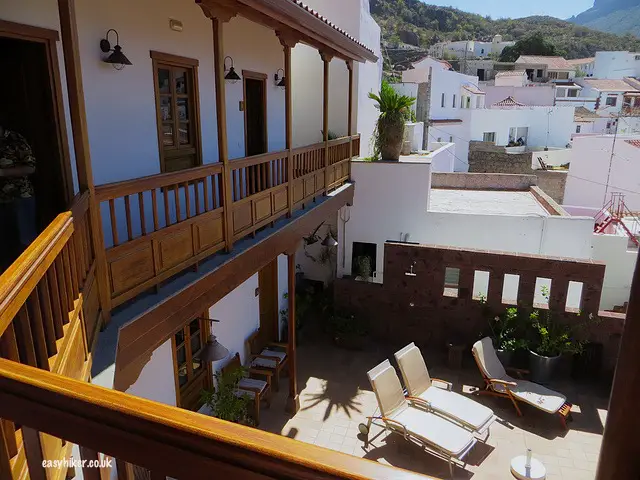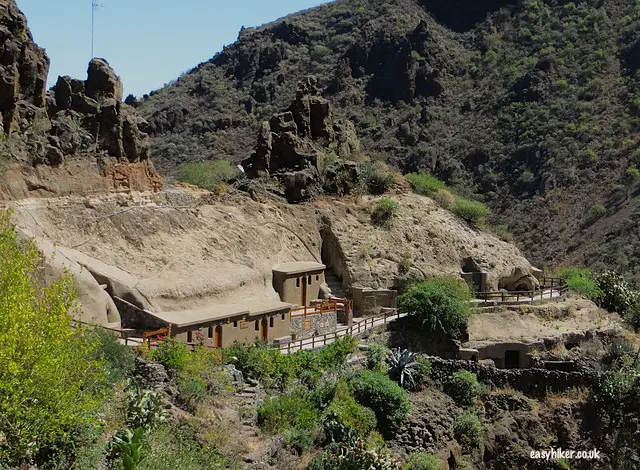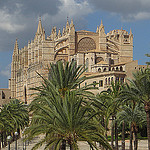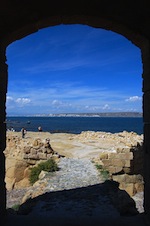Hiking in Gran Canaria
The Gran Canaria Natural
For the past two weeks, we have informed you comprehensively about the walks on this year’s Gran Canaria Walking Festival and about the wonderful time we had sampling them. Today, I want to explain to you why the Walking Festival is relevant and important, economically as well as politically – and why, up to a point, it represents the travel equivalent of “fair trade coffee”.
I want to tell you all about Gran Canaria Natural, the organization behind the Walking Festival, an association of local providers, tour operators and official institutions. Their enthusiasm for the promotion of hiking tours, meanwhile, appears not to be shared by everyone involved in the industry.
Some government agencies, we were told, consistently question the value of investment in the upkeep of trails and the creation of a viable hiking infrastructure – hikers, they argue, will never arrive in sufficient numbers to justify that sort of spending, and when they come, it is pointed out, they don’t spend much. Neither does it help that – we were told – different layers and departments of the administration are controlled by different parties.
At any rate, some people in government appear to be quite happy with the fact that the foreign tourists are isolated in their southern beach resorts, far away from most of the island’s population, quarantined like a dangerous virus.
Then again, consider this. Under Gran Canaria’s prevailing “beach tourism” business model, up to 75 percent of the overall inflow of money flows straight out again, largely into the pockets of foreign tour operators.
Still, the remaining share of one quarter is enough to account for most of Gran Canaria’s income, somewhere between 60 and 70 percent according to most estimates. Clearly the sums we are talking about here are rather significant.
At the same time, only 60,000 out of a population of 1 million local people have a job in the tourism industry, and that already includes people like builders and decorators who are occasionally involved in the construction, maintenance and upgrading of the numerous hotels and “holiday villages” on the island.
It is above all this last figure of 60,000 which could be increased – although it might take a different type of tourism to achieve this.
Now, cash-poor local operators will find it very hard to muscle the international tourism conglomerates out of the beach tourism industry, so they find themselves forced into a different strategy: to build up a niche – which is currently too insignificant and logistically too challenging for large operators to bother with – and to work on it in the hope of gradually extending this niche into a strong and viable industry.
The growth of the hiking market will, ideally, create a win-win situation: the foreign tourists get to see more of the island than merely their beach resorts, while Gran Canaria can achieve a more favourable distribution of the incoming funds – through growth, not redistribution, so even the foreign operators will have little cause for complaints.
It would be difficult to argue that this strategy was anything but legitimate, particularly if you bear in mind that Gran Canaria is not rich. You might even frame it in terms of the “anti-colonial struggle”.
The next great offensive in this “struggle” is the Walk In Gran Canaria initiative, some sort of a “Walking Festival” throughout the year. This programme will provide infrastructure for independent hikers, arrange pick-ups and will be able to put you in contact with a guide who speaks your language.
One thing they are planning to arrange is a walk across the entire island, in several stages of course, during which you will be billeted in charming rural hostels and, for one night, in a genuine Gran Canarian cave.
For independent travellers, they also provide a wide range of local hotels. We have told you already about Hotel Rural Las Calas and Hotel Las Longueras, the two places where we stayed during the Festival Week. Here is a small sample of other places that we visited during our trip to Gran Canaria.
Hotel Rural Fonda de la Tea
The award-winning Hotel Rural Fonda de la Tea in Tejeda village is the perfect stop-over for hikers: cozy, good value, full of character and located in the centre of Gran Canaria’s top hiking destination, the Caldera de Tejeda.
It is run by a former journalist who had enough of the hustle and bustle of Las Palmas, and full of charming little eccentricities – such as the shower on the terrace, installed as a “substitute for a hotel pool”, as owner-manager Fina Suarez explained to us. (Elsewhere on the island, they have horizontal rain – here, they have a vertical swimming pool.)
Hotel Parador Tejeda
A little further up on both the slopes of the caldera and the price scale, you find the Parador de Cruz de Tejeda, a luxury hotel – spas, heated outdoor pools and all – with the most stunning views on the planet this side of the Grand Canyon.
There are altogether nearly 100 Parador hotels all over Spain, usually located in historic buildings or near renowned beauty spots. The company was established in 1928 by Alfonso XIII, grandfather of the current King of Spain, and is considered the largest publicly owned hotel chain anywhere in the world.
Parador hotels are much beloved in Spain – a weekend stay or even a festive dinner rank high on the list of Christmas presents – and equally interesting for foreign visitors who want to experience a “different kind” of Spain. It does not always have to be the Executive Suite, mind you (yours for € 500 per night at the Tejeda).
Casas Rurales de Guayadeque
Nothing, of course, beats staying in a cave while you are in Gran Canaria – neither for authenticity (for hundreds of years, this was – and in some parts of the island, still is – the locals’ preferred accommodation) nor for “adventure”.
In the Casas Rurales de Guayadeque, you can stay inside such a “mountain home” without having to forego any modern amenities. Spending an entire holiday in one of those may not be to everyone’s taste – it is a trifle dark inside – but for one night or two, this is surely an unforgettable experience.
Seaside Hotel Palm Beach
If you are considering to go to Gran Canaria, chances are that you will be looking for a beach holiday, but there is no reason why you should not combine this with a hike or two – even in Maspalomas, the southern heartland of the island’s tourism industry, there are some hotels that support the objectives of Gran Canaria Natural in theory and in practice, for example by advising guests on suitable walking tours, by providing maps and by knowledgeably getting them into contact with specialized tour providers. One such hotel is the Seaside Palm Beach, where you can also enjoy all the creature comforts that a five-star luxury resort can offer…
Dunas Suites and Villas
… and another the Dunas, also at Maspalomas, a family-friendly bungalow park that gives you a choice between full / half board options and a self-catering unit.
Both of these resorts offer their visitors pools (aside from being a stone’s throw away from the beach), excellent restaurants and so many other options of having a great time that it may take an extra effort to “break the strong fetters” of the sweet life and put on your hiking boots.












Christine, I know that there are guided 3-4 day walks because our guide spoke about it to us and he himself did the walk. You’ll be much better served if you contact Gran Canaria Natural (http://www.grancanariafincas.com/uk/index.html) or Walking Gran Canaria (http://www.walkingrancanaria.com/) for more information on this. Thanks for dropping by.
I found an 2011 page from the Independant newspaper describing a 3 -4 day walk that was being developed across he island which sounded just what we are looking for for the spring but i cant find any further reference to it on any other site. do you know if it was ever taken forward ? thanks christine
It is a sad situation really, Marcia. And what makes it even sadder is that what the visitors miss are the best parts that the destination offers.
The first part of your post which deals with how the tourism pie is divvied up made me do a double take. I was sure you were talking about Jamaica. Same thing happens in our industry — the big boys take over the beach and the most popular destinations and leave the rest to the small operators. The government will come around when one of the big boys looks at the numbers and realizes there’s money to be made.
This is the part about travel that really turns me off.
What a great initiative they have here. The walking festival is a wonderful idea. Some relaxation at the beach is a great incentive after a scenic hike. I love the variety of these hotels you toured. I wouldn’t mind spending some time at Dunas Suites.
Love that view at Hotel Parador Tejeda, but each hotel looks very nice. Although I haven’t thought that staying in a cave would be my thing, it would be quite fun to try once — especially since you said there are modern amenities. Thanks for the background info on the festival — very interesting.
Very informative and interesting. Hiking across Gran Canaria sounds great, and it’s a good idea to appeal to a broader range of visitors. How long would that take in total, do you know? (Also, would love to stay in the cave!)
The Gran Canaria Walking Festival sounds like a great initiative. Personally, I get a bit bored just sitting around on beach holidays so I like to hear about destinations where we can combine a nice hotel with beaches and pools with some interesting off-site activities such as hiking.
I sure hope the government agencies sort out their priorities and increase their focus to the hiking trails. It would be such a shame if this segment was entirely ignored. Yes, let them keep the beaches but they need to diversify if they want to increase those numbers.
Separately, the resorts look stunning as well as the surrounding landscape and spending a night in a cave sounds like fun!!
Please keep us updated on their progress. Thanks.
Beautiful place…